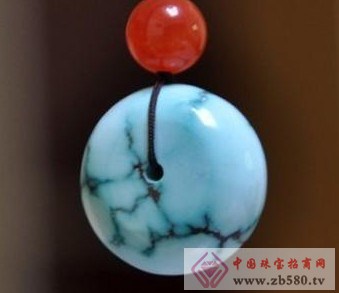Turquoise is one of the ancient gemstones. It has a splendid history of thousands of years and is loved by people of all ages. As early as in ancient Egypt, ancient Mexico, and ancient Persia, turquoise was regarded as a mysterious, sinister object, as amulet and funerary objects. Two pieces of 28 cm long fish-shaped ornaments made of turquoise were unearthed from the site of Yangshao Culture (6500-4400 years ago) in Dahe Village, Zhengzhou, Henan. The oldest and precious turquoise is the golden bracelet made of turquoise in the mummy arm of the Queen of Egypt (Queen Zer) more than 5,000 years ago. When excavated in 1900, the ornaments are still dazzling, and it is a world treasure. Turquoise is simple and elegant, and has been favored by people in many countries for thousands of years, even reaching the level of superstition. The Egyptians used turquoise to cherish their treasures; the Indians believed that wearing turquoise ornaments could avoid evil and receive blessing from the gods; Chinese Tibetans believed that turquoise is the embodiment of God, a symbol of power and status, and the most The popular sacred ornament was used as the crown of the first Tibetan king as a offering for the altar.

In our country, turquoise has been used by humans in the Stone Age. There are turquoise decorations in the late Neolithic artifacts 5,000 years ago. In the Neolithic ruins of the Xinyinhua Hall in Nanjing, the Beiyin Yangying Site in Nanjing, excavated artifacts such as turquoise earrings. Turquoise decorations dating back 5000 years ago were unearthed in the cemetery of the original society of Sunjiazhai in Datong County, Qinghai. The Qijia Cultural Relics in Gansu discovered turquoise artifacts dating back 4,000 years ago. In the Shang Dynasty, the Yin dynasty in Anyang, Henan Province, there are inlaid turquoise belts and precious cultural relics such as ivory cups. During the Spring and Autumn Period and the Warring States Period, the ruler used by Wang Goujian was inlaid with precious blue turquoise. When Princess Wencheng of the Tang Dynasty entered Tibet, it also brought a lot of turquoise ornaments, some of which were used to decorate the Buddha statues.
Turquoise is recognized as the "December Birthstone" at home and abroad, symbolizing good luck and good fortune, representing victory and success, and having the reputation of "stone of success". Turquoise is considered the charm of love; if the lover is not loyal, its color will change. If its wearer is on the verge of death, it still represents friendship and loyalty. If you notice that its color is getting lighter, just stay away from it for a few weeks and then regain its brilliance. Turquoise can bring success and luck, especially with sapphire. Turquoise promotes cell regeneration, avoids contamination by pollutants, and strengthens the body. But turquoise is not suitable for purchase, because it is considered unfortunate to be used as a gift.
Digital Faux Leather Fabric,Synthetic Leather Upholstery Fabric,Pvc Leather Shoes Fabric,Pu Synthetic Patent Leather Fabric
Shaoxing Zhong Nian Textile Co., Ltd. , https://www.sxzntextile.com